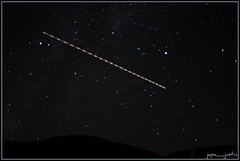 The young little prawn is endearing. The scene where he was curiously studying about his home planet is my favorite. Learning that they come from an exoplanet with se7en moons make me a happy camper, too. I would love to hang out with that cute little prawn and learn more about their planet which I speculate is earth-like in many respects. The temperature, atmosphere, terrain and gravity of their home world must be quite similar to Earth's, otherwise the prawns would not survive here if their planetary characteristics were any different.
The young little prawn is endearing. The scene where he was curiously studying about his home planet is my favorite. Learning that they come from an exoplanet with se7en moons make me a happy camper, too. I would love to hang out with that cute little prawn and learn more about their planet which I speculate is earth-like in many respects. The temperature, atmosphere, terrain and gravity of their home world must be quite similar to Earth's, otherwise the prawns would not survive here if their planetary characteristics were any different.District 9 is like a comic book, more enjoyable when viewed as such. Many loopholes in the plot are over-ruled by great cinematography. I'm only nagged by a single question of why the humans treated the aliens unintelligently. One would have naturally dealt with these prawns in a civilized way, as one would treat any visitor. Nevertheless, the movie gives homage to the directing prowess of Neill Blomkamp.
The movie will prove to be a great discussion for Xenosociology, the study of Alien Cultures and their social behaviours. It gets steamy when they interact with Humans in a complex setting (apartheid) where the dark elements of the human psyche is displayed. The aliens themselves are reduced to high-tech scavenger bugs.
It makes one think whether an Advanced Technological Civilization would make a race "civilized" at all. However, the drama that ensues manages to reveal the virtues common to both species.
District 9 is a neat little package that gives the freedom to draw one's own metaphors from. It is a great Sci-Fi movie that will reverberate in our culture for quite a while.












